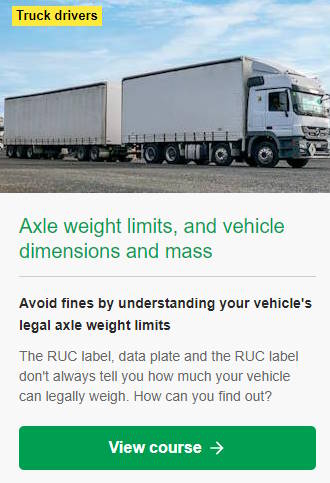Working out how much your truck can weigh on each axle is complex and, if you get it wrong, you can receive a fine if CVST weighs your truck. Most people who receive fines have either been given the wrong information, they don’t know how to calculate the maximum weights, or they don’t care.
So, how do you know the maximum weight your truck can weigh when you’re loaded?
You can’t tell by looking at it, counting the axles, reading the certificate of loading or the truck’s data plate, or looking at the figures on NZTA’s website. There are four things you need to look at to calculate your own maximum weight.
- The axle and axle group limits as per the certificate of loading
- The axle and axle group limits as per the vehicle dimensions and mass rule (VDAM)
- The tare weight of the vehicle and the gross vehicle mass (GVM) or gross combination mass (GCM)
- The type of tyres you are using.
Once you have this information, you can calculate the maximum weight based on the tyre guidance supplied by NZTA.
If you are running high-productivity motor vehicles (HPMV) they can run heavier, but must meet certain requirements.
To learn about this so that you don’t receive another fine, the axle weight limits are explained in the course mentioned above. This is a short course that could save you thousands of dollars in fines and delays.

